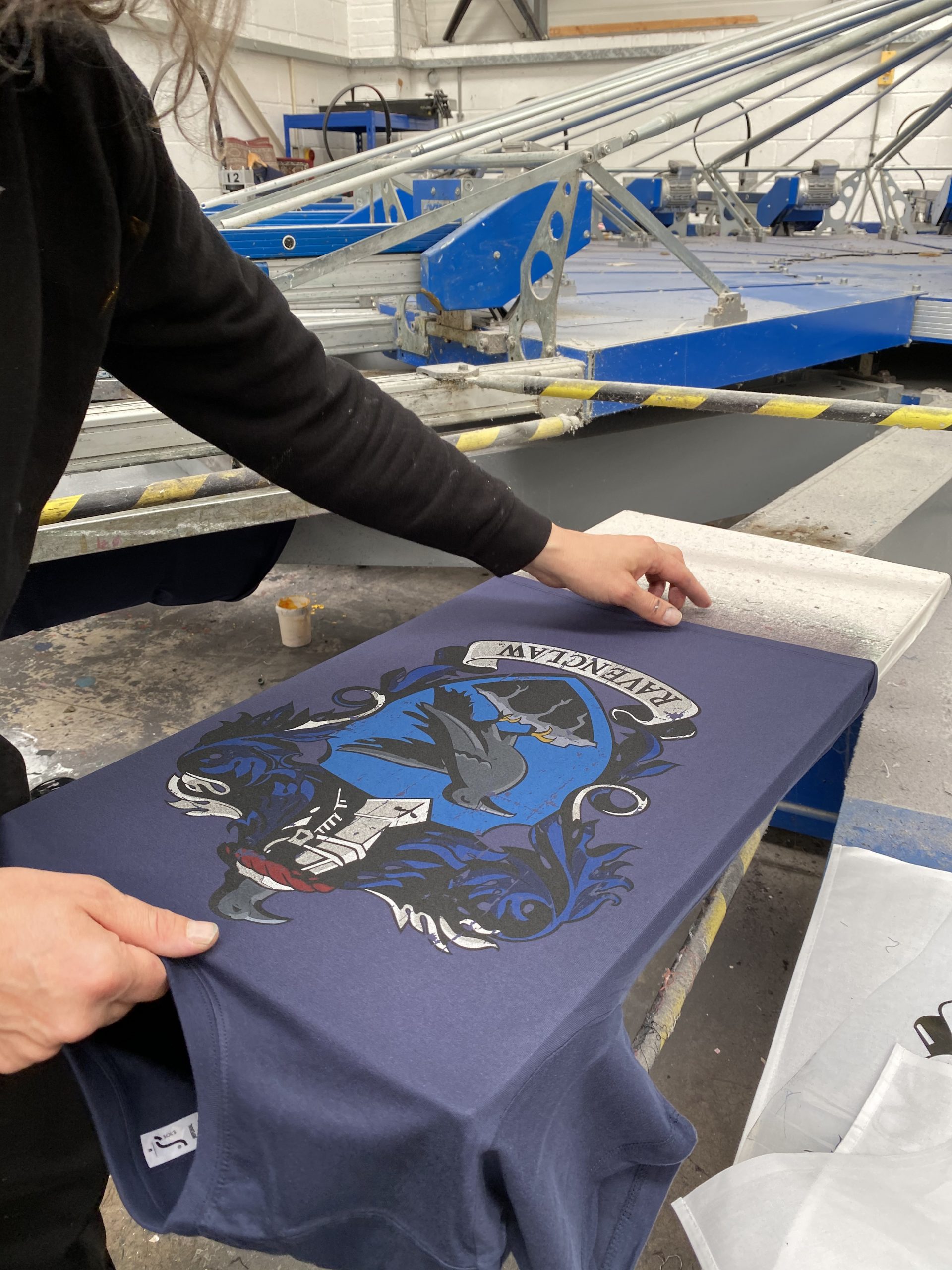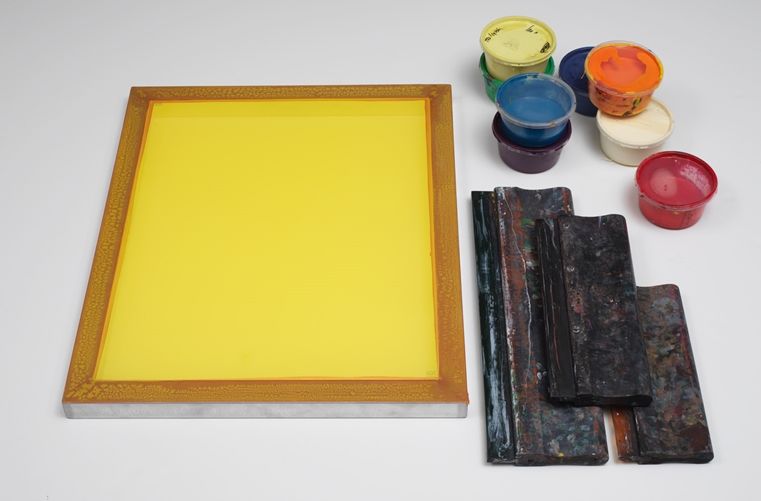Discover the Different Kinds Of Screen Printing Techniques for Your Following Project
Screen printing offers a varied variety of strategies that can improve any type of creative job. From conventional techniques like serigraphy to contemporary innovations such as direct-to-garment printing, each strategy has its one-of-a-kind advantages. Specialty choices, including green and metal inks, introduce much more opportunities. Recognizing these techniques can significantly influence the last outcome. Nevertheless, the obstacle depends on choosing one of the most ideal approach for particular needs and wanted impacts. What variables should one consider?

The Fundamentals of Screen Printing
Screen printing may seem complicated, it is fundamentally a simple process that entails moving ink through a mesh screen onto different surfaces. The method begins with the development of a pattern, which defines the style to be printed. This stencil is affixed to a mesh screen, typically made of polyester or nylon. As soon as the stencil remains in place, ink is related to the screen and pressed through the mesh making use of a squeegee, leading to the desired pattern being published on the underlying material.
Screen printing can be done on a variety of substrates, including plastic, paper, and textile, making it a versatile selection for numerous jobs. The procedure allows for lively colors and complex layouts, making it prominent in markets such as art, advertising, and style. Understanding these fundamentals outfits individuals with the foundational expertise required to discover advanced methods in screen printing.
Traditional Screen Printing Techniques
Conventional screen printing techniques have been used for centuries, preserving the workmanship and virtuosity of this approach. This approach uses a mesh screen to move ink onto a substratum, such as fabric or paper, enabling vivid and lasting layouts. The process starts with producing a stencil, which obstructs specific areas of the screen to manage where the ink will be applied.
One preferred method is serigraphy, usually made use of for limited editions and imaginative prints. One more is using water-based inks, which are eco-friendly and give a soft feeling on fabrics - 10:9 Design Company. Furthermore, standard approaches can consist of hand-operated printing, where craftsmens apply ink with a squeegee, making sure precision and interest to information
These strategies continue to be valued in the sector for their responsive top quality and the unique structures they produce, appealing to both designers and customers who value the heritage of screen printing.
Digital Screen Printing Innovations
As the demand for faster manufacturing and customization in the printing market has actually surged, digital screen printing advancements have become a game-changer. This technology blends conventional screen printing techniques with digital procedures, enabling quick prototyping and complex layouts that were formerly challenging to attain. One considerable development is the introduction of direct-to-garment (DTG) printing, which promotes high-grade, full-color prints on numerous textiles without the need for screens. Furthermore, innovations in ink solutions have resulted in environment-friendly choices that preserve dynamic shades while decreasing environmental impact. The use of automated systems further streamlines production, decreasing labor expenses and improving precision. These technologies not only satisfy little batch orders and customized styles yet also enable quicker turn-around times, making them excellent for companies concentrated on conference customer needs in a fast-paced market. Digital screen printing, as a result, represents an essential development in the domain of printing techniques.
Specialized Screen Printing Methods
Discovering specialty screen printing methods discloses a diverse selection of strategies that press the borders of creativity and capability in the printing sector. Among these, glow-in-the-dark inks provide an unique aesthetic effect, making layouts come to life in low-light problems. Metallic inks, known for their sparkling surface, add a touch of deluxe to printed products. Another innovative approach is discharge printing, which eliminates color from the textile as opposed to including ink, leading to a soft, classic feeling. High-density printing produces an elevated texture externally, improving responsive engagement. Additionally, water-based inks are acquiring popularity for their vibrant shades and decreased environmental influence. Each of these specialized methods deals with certain layout requirements, click here making it possible for brand names and artists to produce standout products that resonate with their audiences. By leveraging these methods, companies can boost their screen printing projects to brand-new heights, ensuring unforgettable perceptions.
Eco-Friendly Screen Printing Options
Green screen printing options are gaining traction as the industry shifts towards sustainability. Sustainable ink choices and using naturally degradable materials are crucial elements in lowering the ecological impact of the printing process. By adopting these methods, screen printers can add to a much more sustainable future while preserving top quality results.
Lasting Ink Choices

Biodegradable Products Usage
As the screen printing sector progresses, the incorporation of eco-friendly materials is ending up being significantly crucial for ecologically aware techniques. Producers and designers are currently discovering inks and substratums made from natural, eco-friendly resources that break down more successfully than typical counterparts. These naturally degradable alternatives reduce plastic waste and decrease ecological influence, lining up with the growing demand for lasting items.
Common instances consist of water-based inks and organic cotton materials, both of which reduce harmful chemicals and advertise eco-friendliness. Brand names that take on these materials usually boost their market allure, drawing in customers who focus on sustainability. As understanding of environmental issues remains to climb, the change towards biodegradable products in screen printing is most likely to obtain energy, cultivating a greener sector criterion.
Picking the Right Method for Your Job
How can one identify one of the most appropriate screen printing strategy for a specific project? The decision depends upon numerous variables, consisting of the material to be printed on, the complexity of the layout, and the wanted manufacturing volume - 10:9 Design Screen Printing. For example, direct-to-garment printing is perfect for intricate designs with various shades, while traditional screen printing stands out for bigger runs of easier graphics
Furthermore, factor to consider of the end-use of the published product is vital. For outdoor applications, methods that use sturdiness and weather condition resistance, such as plastisol ink, may be preferred. On the other hand, environmentally-conscious tasks may profit from biodegradable materials or water-based inks.
Eventually, understanding the task's distinct requirements permits for an informed selection, making certain both visual appeal and functional longevity. By examining layout complexity, product compatibility, and manufacturing range, one can properly pick one of the most appropriate screen printing technique to meet their job's objectives.
Regularly Asked Concerns
What Is the Background of Screen Printing?
Screen printing came from ancient China around 1000 ADVERTISEMENT, evolving via Japan and Europe. By the 20th century, it came to be popular in industrial art and fashion, changing exactly how layouts were created and dispersed globally.

Just how Do I Prepare Art Work for Screen Printing?
To prepare artwork for screen printing, one should guarantee high resolution, use a suitable shade mode, develop different layers for each color, and transform text to lays out, guaranteeing compatibility with the printing procedure and wanted end result.
What Materials Are Finest for Screen Printing?
The very best materials for screen printing include top quality inks, durable screens, and ideal substrates like cotton, polyester, or blends. Furthermore, making use of proper emulsion and squeegees can boost the printing process and results.
Can I Screen Print in the house?
Yes, screen printing in the house is feasible. With the best products, configuration, and techniques, individuals can develop high-quality prints. Cautious factor to consider of office and devices is crucial for successful outcomes.
What Are Common Errors in Screen Printing?
Usual mistakes in screen printing consist of improper exposure times, poor ink uniformity, imbalance of screens, inadequate cleaning of materials, and neglecting to check prints. These errors can jeopardize the top quality and accuracy of the last product.
Screen printing might appear complicated, it is fundamentally a simple process that includes moving ink with a mesh screen onto various surfaces. As the demand for faster production and modification in the printing industry has risen, digital screen printing technologies have emerged as a game-changer. Discovering specialized screen printing methods exposes a varied array of methods that push the borders of creative thinking and performance in the printing sector. The finest products for screen printing consist of top notch inks, long lasting screens, and ideal substratums like cotton, polyester, or blends (10:9 Design Embroidery). Typical mistakes in screen printing include improper direct exposure times, poor ink uniformity, imbalance of screens, not enough cleansing of materials, and ignoring to test prints